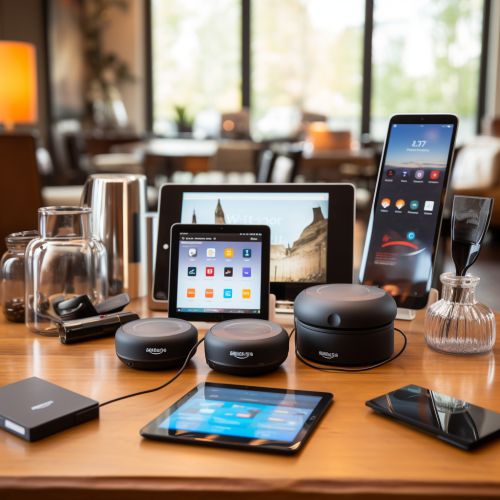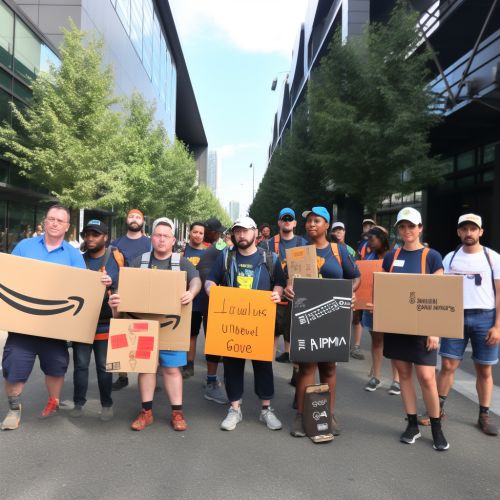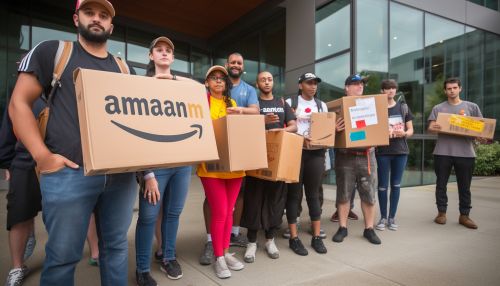Amazon
History
The history of Amazon begins in the garage of founder Jeff Bezos in Bellevue, Washington. Bezos, who was working as a vice president for D. E. Shaw & Co, decided to start an online bookstore. He left his job and moved to Seattle, working out of his garage to create the initial Amazon site. Amazon was incorporated in Washington State in 1994 and the site went online in 1995.


The company was initially named "Cadabra", but this was abandoned for sounding too similar to "cadaver". Bezos instead named the business after the Amazon River, the largest river in the world, as he hoped his business would similarly become the largest in the world.
Growth and Expansion
Amazon started as an online bookstore, but quickly diversified, selling DVDs, CDs, video and MP3 downloads/streaming, software, video games, electronics, apparel, furniture, food, toys, and jewelry. The company also produces consumer electronics—especially, Kindle e-readers, Fire tablets, Fire TV, and Echo devices—and is the world's largest provider of cloud infrastructure services through its AWS division.


Amazon has separate retail websites for some countries and also offers international shipping of some of its products to certain other countries. In 2015, Amazon surpassed Walmart as the most valuable retailer in the United States by market capitalization. In 2017, Amazon acquired Whole Foods Market for $13.4 billion, substantially increasing its footprint as a physical retailer.
Business Model
Amazon's business model is a complex one, built on a diverse range of products and services. The company operates through three core segments: North America, International, and Amazon Web Services (AWS). The North America and International segments generate revenue primarily from retail sales of consumer products and subscriptions through North America-focused and internationally-focused websites. The AWS segment earns revenue from global sales of compute, storage, database, and other service offerings for start-ups, enterprises, government agencies, and academic institutions.


Amazon's subscription service, Amazon Prime, is a crucial part of the company's business model. Prime members pay an annual fee to receive benefits such as free two-day shipping on eligible items, access to streaming media, and other services. As of 2020, there were over 150 million Prime subscribers worldwide.
Criticisms and Controversies
Despite its success, Amazon has faced numerous criticisms and controversies. These range from labor practices, to environmental impact, to the company's effect on the retail industry. Amazon has been criticized for its treatment of workers, for fostering a harsh and demanding work culture, and for its tax practices.


Amazon has also faced scrutiny for its environmental impact. The company has been criticized for the amount of waste generated by its packaging and for its contribution to carbon emissions. In response, Amazon has made commitments to reduce its environmental impact, including a pledge to be net zero carbon by 2040.
